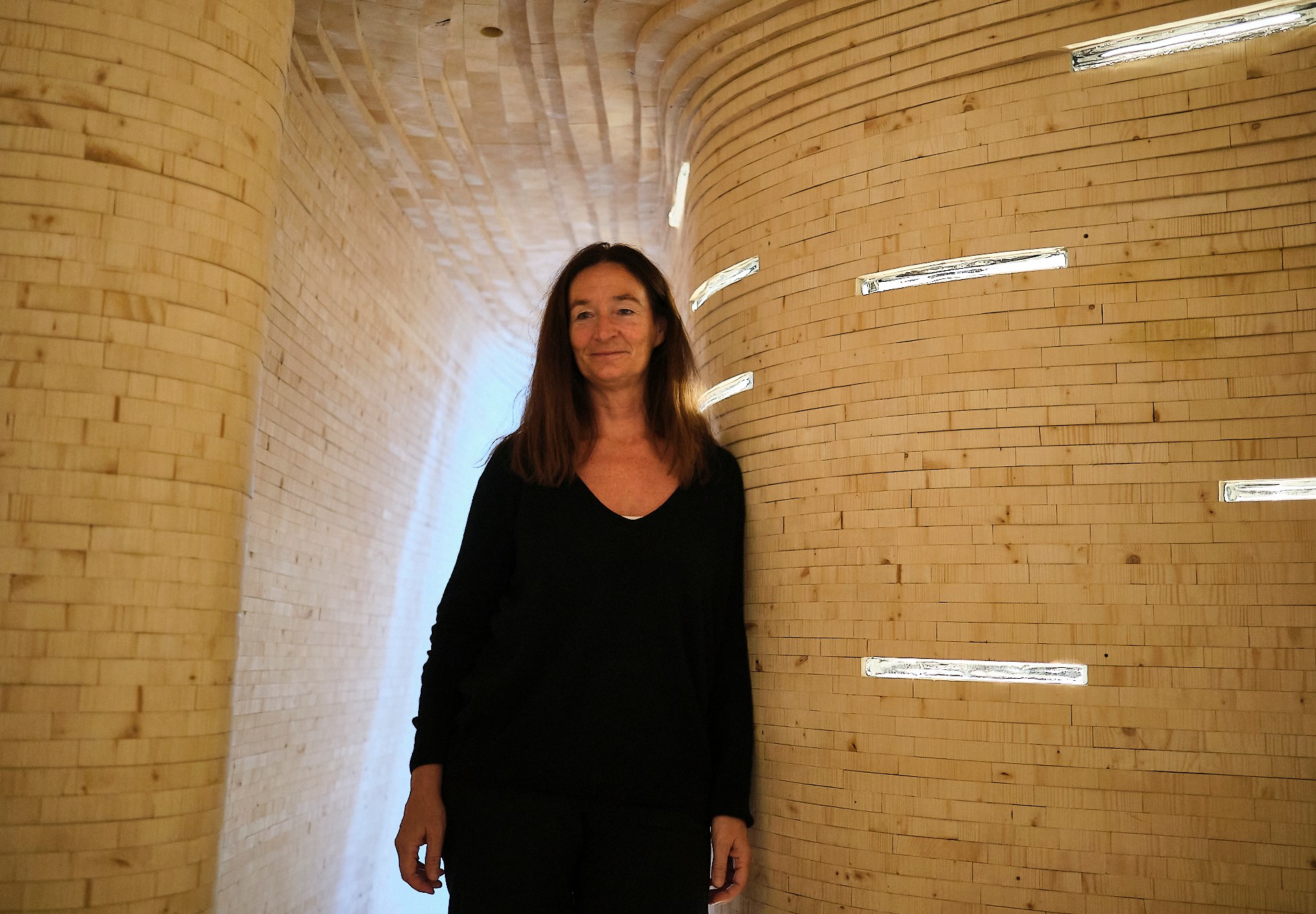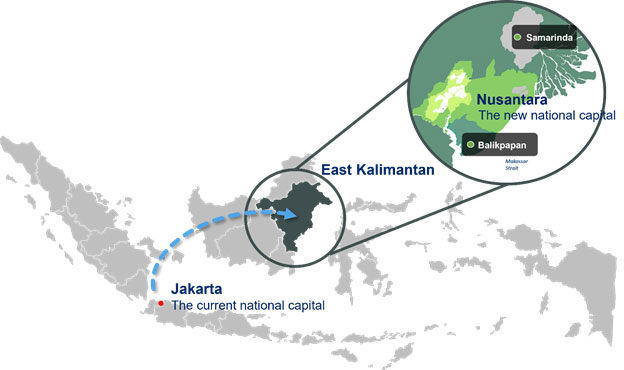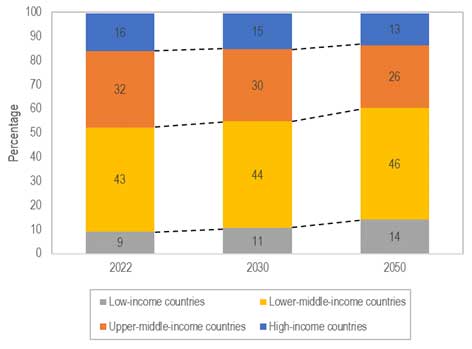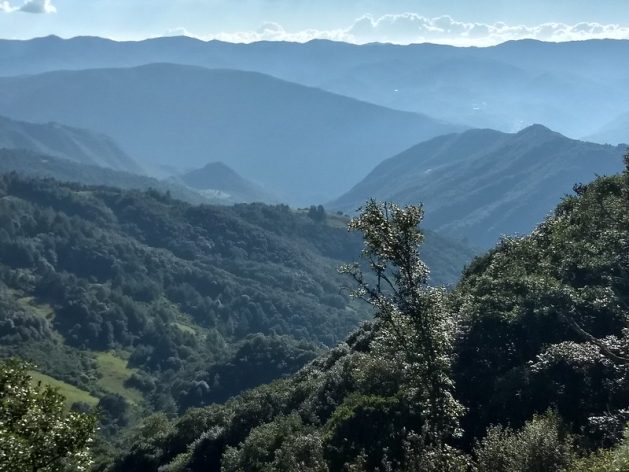A library of the ‘future’: Can it make the world a better place? | Features
Oslo, Norway — Every May, literature lovers from all over the world walk 40 minutes through the hilly Nordmarka Forest outside of Norway’s capital Oslo and stop at a place where 1,000 Norwegian spruce, planted in 2014, are slowly growing. Here, the foresters make coffee on a fire and people gather around as a writer hands over a manuscript that will not be read until 2114.
This is the site of the Future Library, a century-long project conceived by Scottish artist Katie Paterson.
The vision is to get 100 carefully chosen authors to submit a manuscript each, one a year, and safeguard the works, unread, for a century, when they will be unsealed and published as a testament to the passage of time, mankind’s endurance and the hope that was imbued in the project by the generations that came before.
The manuscripts are sealed inside the “Silent Room” at the city’s spectacular public library, the Deichman Bjorvika. Designed by artists and architects Atelier Oslo and Lund Hagem alongside Paterson, the Silent Room is hidden away on Deichman’s top floor, where Norway’s oldest book is being kept similarly safe from a possible flood.
One hundred layers – one for each year and author – line the undulating walls of the Silent Room, folding on top of each other in soft, asymmetric curves from floor to ceiling. They resemble tree rings and are made from the wood of older trees that have been felled to make space for the Future Library forest – a process of continuous regeneration carried out as part of the maintenance of the managed forests around the city.
The works can be any length, in any language and style, but all we will know of them, in our lifetime, is the title. There is little danger of a sneak-peak: Each manuscript is encased in a steel box embedded deep within a “tree ring” and hidden behind a glass panel emanating a soft but bright light. It reveals nothing but the author’s name, alongside their year, and is secured by an alarm.
Together, these works will create a literary time capsule of each passing year, with future generations – so is the hope – taking over the project’s legacy.
The Silent Room has a temple-like calm. No shoes are allowed inside and the room’s soft smell of wood serves as an umbilical cord to the forest outside that will help bring the books to life – today’s saplings that will provide the paper for about 3,000 copies of the anthology.
Planted on a slope surrounded by the verdant forest, these young trees form a living amphitheatre around the wooden bench where the handover ceremonies take place. The trees, lit by a soft October sunshine on our visit, look like an audience. It is hard to shake the feeling that they are watching. “But they are!” Anne Beate Hovind, the chairwoman of the Future Library Trust, exclaims.
A 100-year plan
The idea of the Future Library came to Paterson on a train journey while she was drawing tree rings on a napkin. Paterson, who has recently unveiled an interactive installation at Apple’s HQ, is known for artworks that challenge our perceptions and ideas of fundamental principles around us, like time, space and our place in them. She has mapped all of the dead stars, outfitted a grand piano to play a Morse-coded version of Beethoven’s Moonlight Sonata, bounced off the surface of the moon and set up a direct phone line to a melting iceberg. It was never going to stop at tree rings.
Paterson became fascinated with the notion of deep time in the primordial landscapes of Iceland’s far north where she took on a job as a chambermaid after completing her art degree. She’s since dedicated her career to exploring the profound connection she senses between humans and the planet.
It has fostered her love of forests and their sense of timelessness, with trees carrying the memory of an era long before ours. “Books are trees, libraries are forests,” Paterson explains. “Every book you pick up has its origin in a tree somewhere – it was alive.”
“It’s actually the shortest time span of all my work. It’s only 100 years,” Paterson laughs, as she speaks of the project over a video call from her home in Fife, Scotland.
As the Future Library is about to enter its 10th year, Paterson says the biggest change in the way the project is perceived has been the shift in perspective towards climate and ecology. At the start, she was mostly queried about the physicality of the book and whether books will still exist in 100 years. Now, she says, the questions are turning to the extinction crisis and whether there will be anyone left to read the books.
“It’s just horrendous to watch and learn about new oil fields and … the profits going up, still, which is just unthinkable,” Paterson says, frustrated. It’s totally depressing, she admits. But, on the other hand, she sees that change is happening.
“I guess artists have always, always responded to that particular moment in time, whatever it might be. And now, this is absolutely our moment,” she insists.
![Manuscripts are slotted into the walls of the Silent Room [Anna Pivovarchuk/Al Jazeera]](https://www.aljazeera.com/wp-content/uploads/2023/12/Future-Library-manuscript-in-wall-silent-room-Anna-Pivovarchuk-1704030060.jpg?w=770&resize=770%2C513)
Leap of faith
With the climate catastrophe and the trajectory of our species at the core of the Future Library project, words like “trust,” “hope” and “optimism” come up incessantly in discussions around the project.
It was “such a leap of faith”, Paterson admits – one that found a soft landing in the capable hands of Hovind, who is also the project’s producer.
Hovind initially met Paterson in 2011, in her role as art director in charge of commissioning public artworks at the development firm Bjorvika Utvikling, which was behind the now-iconic rejuvenation of the Oslo waterfront and originally commissioned the Future Library.
Given Hovind’s CV, it may be surprising to find her laughing, rubber gloves on and trowel in hand, scraping gum off the Silent Room floor after she had spent a good hour explaining the project to curious visitors: “Commitment. … Oh my god, life! This is why it’s succeeded, you know. I know what it takes.”
“I thought, OK, the forest. How do I get a forest?” Hovind recalls the early conversations about the Future Library with Paterson. To sell the out-of-the-box idea to the funders, Hovind started with concrete practicalities. First, in 2013, she brought the concept of dedicating a suitable area to the initiative to the director of forestry for Oslo’s municipality – it had been buying forest land around the city since 1889 as protection against urban expansion. To her surprise, he met the proposal with a “Why not?”
Having secured the space, Hovind waited until the project felt viable before asking for a 100-year contract. The official agreement for the Future Library forest was signed in May 2022; by then, the saplings had also physically taken root.
Then there was the tricky question of persuading writers to commit to a piece of work that will not be published in their lifetime. Hovind admits she was unsure whether authors would even want to be part of another artist’s project. “We didn’t know anything about the literature field. So we were like, what’s gonna happen?” she says.
Paterson and Hovind reached out to Margaret Atwood, an award-winning author and the closest the world may have to an oracle, known for getting the future eerily right. Indeed, Atwood may as well have been looking into a crystal ball when, in a 2010 essay, Literature and the Environment, she asked: “Will we ourselves soon be a lost civilization? Will our own books and stories ultimately become time capsules for some future archaeologist or space explorer? … Should we all put our novels into lead-lined boxes and bury them in a hole in the backyard?”
Paterson says Atwood was a natural fit to the Future Library’s themes of time and imagination and she was taken with the idea that whatever Atwood wrote might have materialised by the time the project concludes.
Atwood said yes almost immediately, becoming the Future Library’s first inductee, to Hovind and Paterson’s excitement – and tears of relief.
Since Atwood handed over her manuscript, Scribbler Moon, in May 2014, the project has grown organically. It feels, Paterson says, like a big family tree.
Now more authors, far from being sceptical, hope to be invited to participate. Hovind, for instance, was unsure about whether Karl Ove Knausgard, a famous Norwegian author, would be interested in the project. To her surprise, he told her that he always wanted to be part of it and never thought he would be asked, she recalls. And it’s not just authors who are increasingly drawn to the project. Norway’s crown princess joined other literature fans at the manuscript ceremony in the forest last year.
The seven-member trust, which includes Hovind and Paterson as well as publishers from Norway and the United Kingdom, and a US museum director, considers writers based on their contributions to literature and poetry. The selection process itself is based on serendipity and gut feeling. Unlike book prizes, there is no initial shortlist or goal to pick the “best”. The trust pays attention to the discussion around the authors’ work and aims for a truly global representation.
The project also receives unsolicited nominations from around the world, which the trust relies on to discover new writers, whose work is evaluated for its ability to capture the imaginations of current and future generations.
![Manuscripts are slotted into the walls of the Silent Room [Anna Pivovarchuk/Al Jazeera]](https://www.aljazeera.com/wp-content/uploads/2023/12/Future-Library-circular-walls-Silent-Room-Anna-P-1704031015.jpg?w=770&resize=770%2C478)
Tree children
“You see these little trees and they look like children,” says Ocean Vuong, a New York Times best-selling poet and novelist who is the Future Library’s seventh contributor. “We often think of trees as these foreboding, old … rings of knowledge … But then it’s such a shock, I think, a very fruitful shock, to see a tree that’s just a sapling. And your heart breaks for it, you know, and you think, My goodness, what, what are you going to see? I hope you see the best of us,” he tells Al Jazeera over a call from his home in Northampton, Massachusetts.
Vuong, who splits his time between Northampton and New York, where he is a tenured professor of literature at NYU, came to the US from Vietnam as a child and has grown up in a busy intergenerational household. At 35, Vuong is the Future Library’s youngest author to date.
“We need everyone at the table. We need everyone’s perspective,” he insists. While he may be of the last generation to cross from analogue into digital – he got his first iPhone when he was 23 – he finds himself surprised at how young people have mobilised in the digital age: “My generation certainly did not talk about the pressing matters of the world the same way my students now talk about it.”
He is cautiously optimistic about this new trajectory.
“I’m really interested in seeing what are the material manifestations of the awareness coming from young people in their 20s now using technology as a way to create their own epistemological traditions.”
For Vuong, the Future Library feels very much like the family he grew up in, and hopes that even younger people will continue to join the project. The stillness and the sense of hope among those attending the handover ceremony were very emotional for him.
“Very rarely, if at all, am I concerned that I would make a tree proud,” he laughs softly. “But that’s what I felt. I said, ‘Oh, my goodness, I hope these trees will be proud of me for using them to print my work’, you know.”
![Anne Beate Hovind stands near saplings in the Future Forest [Anna Pivovarchuk/Al Jazeera]](https://www.aljazeera.com/wp-content/uploads/2023/12/Future-Library-Anne-Beate-forest-Anna-Pivovarchuk-1704030045.jpg?w=770&resize=770%2C502)
Sacred places
Zimbabwean novelist and filmmaker Tsitsi Dangarembga, winner of the Commonwealth Writers’ Prize for Nervous Conditions, who joined the Future Library in 2021, thinks the project’s success lies in its connection to something fundamental and archetypal within us.
“We are not holding the Earth’s produce sacred,” she says over a call from her home in Harare. “We are only holding ourselves and our desires and cognitions sacred, forgetting that the whole system that we live in is sacred. And so I think that this forest is actually a sacred forest. And I think as it grows and people visit it, they will be touched by the spirit of it.”
Dangarembga – who was born in what was then colonial Rhodesia (now Zimbabwe) and had witnessed her country transition from the oppression of white-majority rule to the hope of independence, and then begin to sink yet again, this time under homegrown repression – is critical of the systems of power in place.
What is often referred to as “modernity” is, for her, simply a version of doing things that allows a certain group to define itself as elite – a set-up that has destroyed indigenous knowledge as well as a sense of community.
“I think that perhaps, those of us who have a vision of a different future for humankind might have been naive. Because we always knew, theoretically, that power is never given up willingly, but I don’t think that we really thought about what that means in the areas that generate power,” she says of those in the creative economy who challenge the status quo. “I think we need to strategise better going forward.”
Dangarembga, who has been actively engaged in political protests in Zimbabwe and was handed a suspended prison sentence in 2022 for protesting against the government of Emmerson Mnangagwa, has witnessed a lot of change in her lifetime. It is perhaps because of it, Dangarembga says, that she sees no reason to lose faith in humanity.
She believes there are many people who are beginning to understand that we need to do things differently and who will be inspired by projects like the Future Library – which pushes against the system of expropriation and appropriation – to detach from the hubbub around us and tap into a different source of knowledge.
“Can you imagine if a hundred other countries decided to have such a forward-looking project? … That could change the world.”
![The Future Forest [Anna Pivovarchuk/Al Jazeera]](https://www.aljazeera.com/wp-content/uploads/2023/12/Future-Library-forest-Anna-Pivovarchuk-1704033814.jpg?w=770&resize=770%2C513)
Stories as bridges
“I do passionately… sincerely believe in the power of books to help us, to save us. And why do I say this? Because it happened to me,” says Elif Shafak, the Future Library’s 2017 author. She is sitting in front of a colourful and busy bookshelf in her home in London, where she has been based for more than 14 years.
An introverted only child, Shafak grew up with a single mother in a conservative society in Turkey, and it was books, she tells Al Jazeera over a video call, that “showed me there were other possibilities, that there were other… worlds beyond the world that I had known, that had been given to me.” With it came a sense of freedom, possibility, connectivity and, perhaps most importantly, empathy.
“As human beings, if we learn anything in this life, we learn from difference,” Shafak insists. “We are not going to learn anything from echoes.”
Shafak, an award-winning author of 19 books, with another one out next summer, is a scholar as well as a storyteller (she has a PhD in political philosophy) known for exploring difficult subjects like sexual harassment, gender violence, child abuse, child brides and homophobia – even when she has faced pushback and legal challenges.
Shafak has spoken out against echo chambers as well as the power of stories to punch holes through the walls of difference. “I really think books change us in so many ways but they don’t do this by lecturing, preaching – nothing like that. They shift something in us in a very delicate way. In a very human way, in a very egalitarian way. You know, not from above, but that change comes from within, from the heart… Otherwise, we all have very high egos, inflated egos. We’re surrounded by our own habits, needs, desires, and we don’t see much beyond that.”
Like Dangarembga, Shafak is critical of modern capitalist society and its emphasis on individual needs above nature. Humankind has also, she believes, lost the humility of intellectual exchange, the “sincerity of saying, ‘I don’t know’.” But there is a big difference between information, knowledge and wisdom, she says.
“We live in an age in which we’re bombarded by information. But we have very little knowledge and even less wisdom.”
She wishes more politicians read fiction. This is what makes projects like the Future Library critical – today more than ever, Shafak says.
“This is a project of faith, faith that… our words today will matter to people of future generations, that there will be a need for literature, there will be a need for poetry, for novels, for ideas… for emotional connections.”
She believes that bridges only appear when we are ready to cross them and this is, in her view, a time for crucial global conversations. “For global sisterhood,” she continues, “for connections beyond borders. And at the heart of this, I think, is a longing, a faith in humanity that is very much shared by the Future Library… as a bridge-building project.”
For Shafak, it is all about solidarity and how we connect the dots. “I passionately believe that silences keep us apart,” she says, “silences create walls between us, but stories bring us together”.
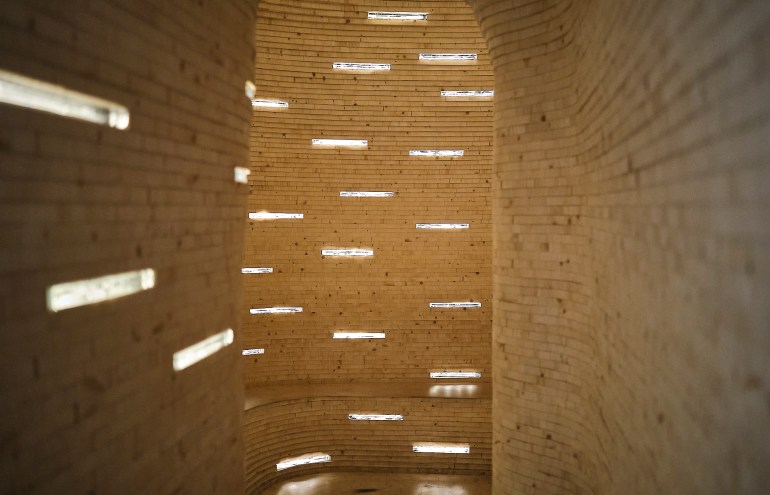
Possible futures
“It’s not possible to predict ‘the future’, as there are many possible futures,” Margaret Atwood writes in an email, adding: “There are also many wild cards – unexpected and unpredictable events.”
If her roguish imagination is anything to go on, however, the very few of us who survive our self-destruction might be living in a tree, fighting off mutant animals and forgetting basic words, like the characters in her MaddAddam Trilogy.
What does that mean for the library? Will the manuscripts or the forest endure the next 100 years? After all, as Jorge Luis Borges famously wrote, man is an imperfect librarian.
There are contingency plans in place. The paper copies of the manuscripts are secured and the tree roots have been treated against possible insect infestations. But there have already been fires both in the Deichman and near the Future Library forest.
With the Future Library becoming a pilgrimage destination, its guardians are embracing uncertainty, even if it means having to replant or rebuild. If something were to happen to the Silent Room, “there will be grief”, Hovind says. “But we have to handle it, and we have to rebuild it. But if it’s a copy or if it’s something else – I think we will deal with [it] and that will be part of the story.”
Forests have long held a spiritual significance when it comes to mankind’s hope for a better future. After all, before the founding of the United Nations, delegates were taken to the Muir Forest outside San Francisco to contemplate the ancient redwood trees as they envisioned strategies for a lasting world peace.
But the significance of the Future Library goes far beyond being a sacred site where humanity consecrates its hopes. According to Dangarembga, “It’s important that we begin to try to think of other scenarios that we could live in. This project seemed to be one of those that was aiming at a different vision of what it could be to be a human community.”
As Atwood writes, “If we manage to turn our disastrous lifestyle around, we have a chance.”
“I feel like if I really wanted to create concrete change, I wouldn’t be doing this, I’d be doing something else,” Paterson admits. “But what it does allow you to do is kind of work with emotion… to create things in situations that can allow these thoughts to penetrate in a really different way, you know, than the news headlines… artwork can take you into… a different way of thinking or feeling or being.”
To everyone involved, the project represents, above all else, hope.
In the face of making decisions about the future, Shafak insists, we cannot afford apathy. But, warns Dangarembga, we have to act in ways that perpetuate and increase hope, because hope alone won’t do the job for us. In her view, the Future Library sustains this decisive momentum: “It keeps the hope in the possibility of good alive,” she says.
Hovind has a dream that the library could do precisely that – prod people into action by serving as an example.
“Maybe the concrete project is that people are inspired to imagine and do concrete things in their world,” she says. “If people could do that … I think we can change the world for the better.”
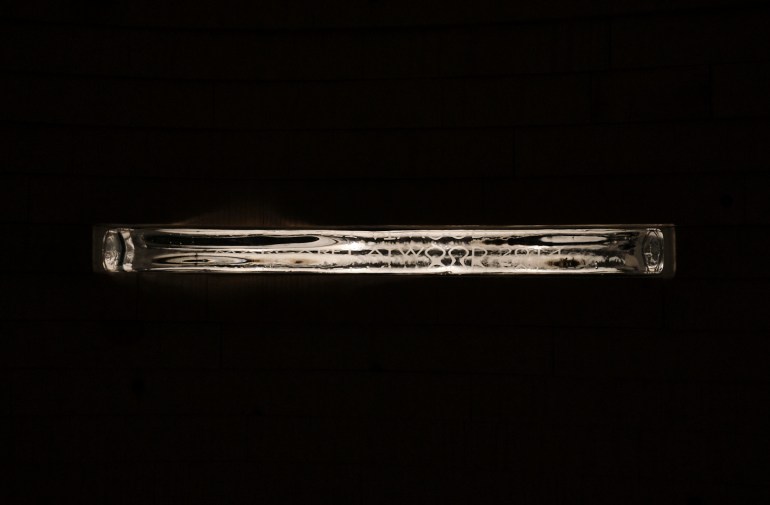
Check out our Latest News and Follow us at Facebook
Original Source

